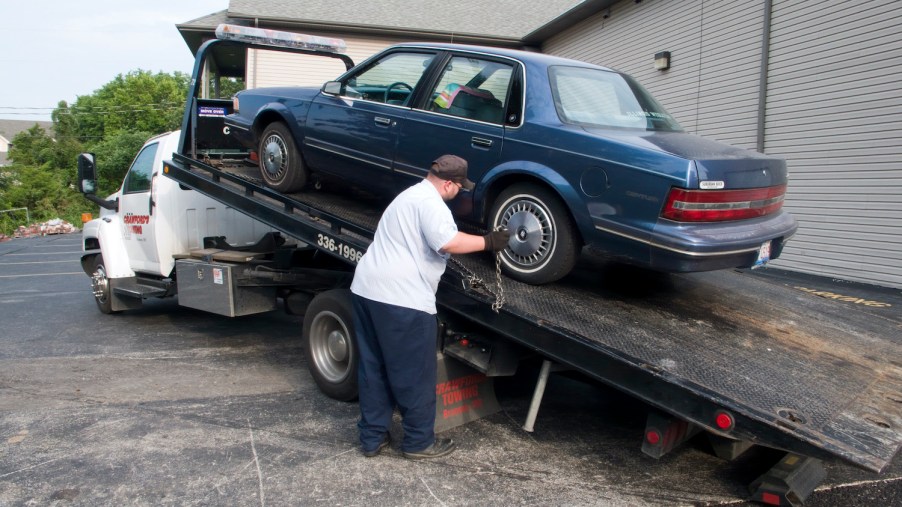
Car Repossessed? Here’s How to Get It Back
If your car has been repossessed, then you may be feeling like it’s gone forever. That’s not necessarily true in some cases as it’s possible to get it back. However, it could just take some time and money to do it. Here’s how.
How to get your car back after a repossession

If your car has been repossessed, then you may need to scrape together some money and call the lender to see how you can get the car back. According to Credit Karma, the laws for getting your car back can vary from state to state, but here are some possible ways to get it back:
- Reinstate the car loan: Depending on your state, your auto loan lender may allow you to reinstate the car loan if you have enough money to pay the past-due amount. The lender will be able to tell you how much you owe on the loan and give you a timeline to pay the amount. Just note that if you’re able to bring make the loan current, it could help to ensure that you can make the payments going forward.
- Redeem your car loan: Another option would be to redeem your car loan. In this case, you will pay the full amount of the loan including the past-due amount and the repo fees. Just be prepared to pony up a large amount of cash if you go this route. But if you can afford it, then you won’t need to worry about making any monthly payments going forward, which is a good thing.
- Buy back the car at auction: After your car get repossessed, the lender typically sends it to an auction to recoup its financial losses. If you really want the car back, then you can opt to buy it back at the auction, but again, be prepared to put forth the cash needed to do so.
The cost of getting your car repossessed
The total cost of having your car repossessed can vary. It also depends on whether or not your lender sells your car and for how much. For example, if the lender sells the car for $5,000, but you owe $7,000, then you would still be responsible for the extra $2,000 plus any repossession fees. This is known as the “deficiency balance.”
However, if the lender is able to sell the car for more than $7,000, then you could be entitled to the surplus minus any repossession fees. In the case that you’re unable to pay the deficiency balance owed, the lender can charge off the amount and send it to a collection agency. Credit Karma notes that the collection account and the repossession will both show up on your credit report. In a worst-case scenario, the collection agency can take legal action against you to get the money owed.
Preventing a repossession is key

If your car has not been repossessed but is at risk of it, then there are some precautionary steps that you can take. Experian recommends reaching out to the lender first if you think you’re going to miss a car payment.
By communicating with your lender, you may be able to explain your situation to them and obtain a modified loan program or even pause the payments. Another option would be to refinance the auto loan through a different lender. By doing so, you’ll be wiping out the existing loan with another one, but the new one could come with lower and more manageable monthly payments.
Either way, it pays to stay on top of your loan payments to keep your car in your possession. Ultimately, a repossession can damage your credit and your everyday life, but fortunately, there are ways to get the car back if the inevitable happens.



